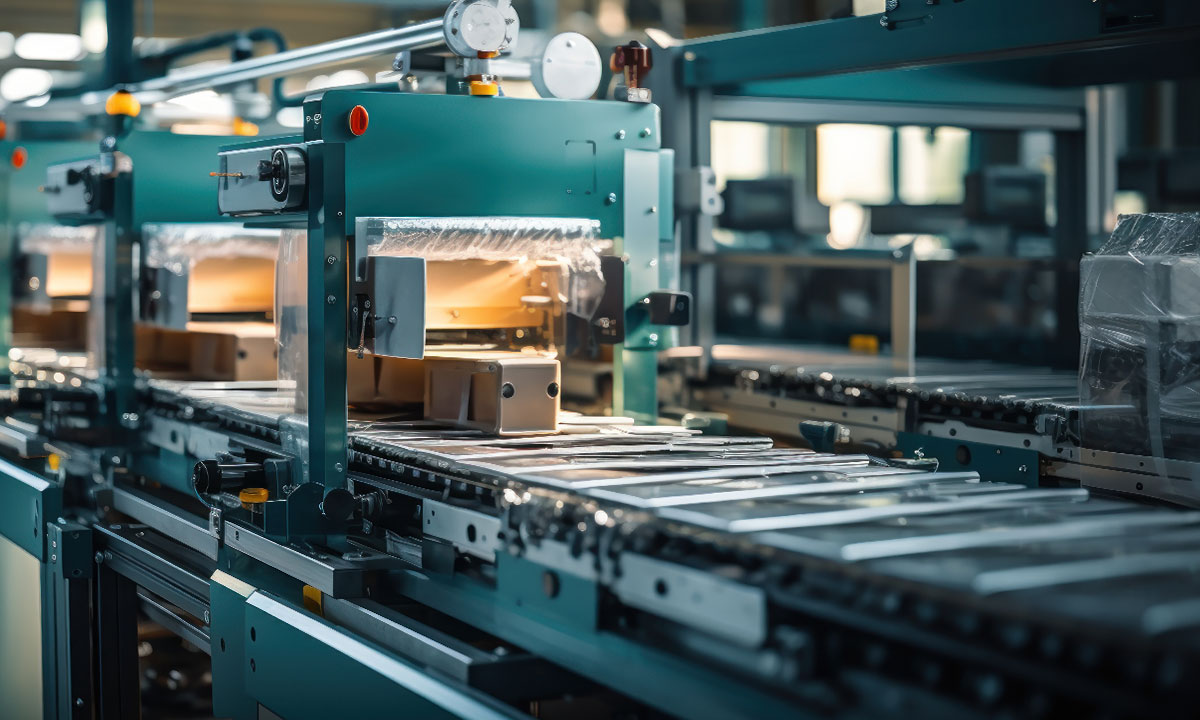Welcome to our comprehensive guide on programming a Programmable Logic Controller (PLC). In this blog post, we will delve into the fascinating world of PLCs, tracing their origins, exploring their architecture, and learning how to program these versatile devices step by step.
From understanding the functionality and basic functions of PLCs to examining their security features and applications in various industries, this guide is designed to provide you with a solid foundation in PLC programming. So let's embark on this enlightening journey together!
A Step-by-Step Guide to Programming a Programmable Logic Controller
To program a Programmable Logic Controller (PLC), start by creating a new project in the PLC programming software. Define inputs and outputs, mapping them to physical devices connected to the PLC. Next, write the program logic using ladder logic diagrams or other programming languages supported by the software.
After writing the program, simulate it to check for errors or inconsistencies. Once satisfied with the simulation results, download the program to the PLC and test it in real-world conditions to ensure proper functionality. This step-by-step process ensures efficient and accurate PLC programming for various industrial applications.
Introduction
Programmable Logic Controllers, commonly known as PLCs, are essential components in industrial automation systems. These devices play a crucial role in controlling machinery and processes by executing specific functions based on the input received. Understanding how to program a PLC is vital for engineers and technicians working in various industries.
In this blog post, we will delve into the history of PLCs, their architecture, programming methods, functionality, security features, user interface design, hardware components, and real-world applications across different sectors. Whether you're new to PLC programming or looking to enhance your skills, this step-by-step guide will provide valuable insights into mastering this technology.
Invention and Early Development of PLCs
The invention of Programmable Logic Controllers (PLCs) revolutionized industrial automation. In the late 1960s, engineers at General Motors developed the first PLC to replace complex relay systems in manufacturing plants. This innovation drastically improved efficiency and reliability in controlling machinery on factory floors.
Early PLCs were basic units with limited memory and functionality compared to modern ones. Over time, advancements in technology led to the development of more sophisticated PLC models capable of handling complex automation tasks with precision and speed.
Architecture of Programmable Logic Controllers
Programmable Logic Controllers (PLCs) consist of three primary components: the central processing unit (CPU), input/output modules, and programming device. The CPU serves as the brain of the PLC, executing programmed logic instructions to control the system. Input/output modules interface with sensors and actuators in the external environment, enabling communication between the PLC and connected devices.
The programming device allows engineers to create and modify logic programs that dictate how the PLC operates. This architecture provides a robust framework for controlling industrial processes efficiently and reliably, making PLCs indispensable in automation systems worldwide.
Programming a PLC
Programming a Programmable Logic Controller (PLC) involves creating sequences of logic operations to control industrial processes. The programming language used for PLCs is typically ladder logic, which resembles electrical circuit diagrams. Each rung in the ladder represents a specific function or operation, such as turning on a motor or opening a valve.
To program a PLC, users input their desired logic into specialized software provided by the manufacturer. This software translates the logic into machine-readable code that can be uploaded onto the PLC hardware for execution in real-time. Understanding how to properly program a PLC is crucial for ensuring efficient and safe operation within industrial environments.
Functionality and Basic Functions
Programmable Logic Controllers (PLCs) are versatile devices used in industrial automation to control various processes. The functionality of a PLC is based on its ability to execute specific functions according to the programmed logic. These functions include digital and analog input/output processing, data manipulation, timing operations, arithmetic calculations, and communication with other devices.
Basic functions of a PLC involve monitoring input signals from sensors or switches, executing the programmed logic based on these inputs, and controlling output devices such as motors or valves accordingly. This allows for precise control over industrial processes and ensures efficient operation within specified parameters.
Understanding the Process of a Scan Cycle
Programmable Logic Controllers (PLCs) operate on a continuous loop known as a scan cycle. This cycle consists of three main steps: input scan, program scan, and output scan. During the input scan, the PLC reads the status of all connected input devices to determine their current state. In the program scan phase, the PLC executes the user-defined logic program stored in its memory to process this input data and make decisions based on predefined instructions.
Once the program has been executed, the PLC moves on to the output scan where it updates the status of connected output devices according to the results of its calculations. Understanding this sequential process is crucial for programmers working with PLCs as it allows them to design efficient control systems that can respond accurately and swiftly to changing conditions in various industrial applications.
Security and Safety Features of PLCs
Programmable Logic Controllers (PLCs) are equipped with robust security and safety features to ensure the integrity of industrial processes. One key feature is password protection, which restricts unauthorized access to the PLC programming software and prevents tampering with critical settings. Additionally, PLCs often have built-in encryption protocols to safeguard communication between devices and prevent data breaches.
Moreover, many modern PLCs come with secure firmware updates that help in patching vulnerabilities and enhancing system security over time. These measures collectively contribute to maintaining a secure operational environment for industrial automation systems utilizing PLC technology.
Comparison of PLCs with Other Control Systems
When comparing Programmable Logic Controllers (PLCs) with other control systems, it's essential to note their unique characteristics. Unlike traditional control systems that rely on relays and timers, PLCs offer more flexibility and efficiency in programming complex automation tasks. Additionally, PLCs provide real-time monitoring and data logging capabilities that set them apart from conventional control systems.
Moreover, PLCs are known for their high reliability and ruggedness, making them suitable for industrial applications where harsh environmental conditions exist. These factors make PLCs a preferred choice for controlling processes in manufacturing plants, power generation facilities, and various other industries worldwide.
PLC User Interface and Communication
Programmable Logic Controllers (PLCs) are equipped with user interfaces that allow operators to interact with the system. The interface typically consists of a screen displaying vital information such as process status, alarms, and programming options. Operators can input commands through buttons or touchscreens to control the PLC's functions.
Communication plays a crucial role in PLC systems, enabling data exchange between devices like sensors, actuators, and supervisory systems. Various communication protocols such as Ethernet/IP, Modbus TCP/IP, and Profibus are commonly used to facilitate seamless interaction within industrial automation networks.
Hardware Components: PLC Chip, Microcontrollers, Single-board Computers
Programmable Logic Controllers (PLCs) rely on essential hardware components for their functioning. The PLC chip serves as the brain of the system, processing data and executing commands efficiently. Microcontrollers play a crucial role in controlling input and output devices, ensuring seamless communication within the PLC system.
Single-board computers are also integral to PLCs, providing a compact platform for programming and interfacing with external devices. These hardware components work harmoniously to enable precise control and automation in various industrial applications using programmable logic controllers.
Application of PLCs in Various Industries
Programmable Logic Controllers (PLCs) find extensive application across various industries, offering efficient control over manufacturing processes. In the automotive sector, PLCs manage assembly lines and robotic operations to ensure precise production standards. The food and beverage industry utilizes PLCs for monitoring and controlling mixing, baking, and packaging processes with accuracy.
Moreover, in the pharmaceutical field, PLCs play a crucial role in regulating dosage formulations and maintaining stringent quality controls during drug manufacturing procedures. Additionally, PLC applications extend to wastewater treatment plants where they automate the operation of pumps, valves, and filtration systems for optimal efficiency.
Case Studies
Case studies showcasing the practical application of programmable logic controllers (PLCs) are instrumental in understanding their real-world benefits. These real-life examples provide valuable insights into how PLCs can streamline processes, increase efficiency, and improve overall productivity across various industries. By examining specific scenarios where PLCs have been successfully implemented, individuals can gain a deeper appreciation for the versatility and effectiveness of these control systems.
From automating manufacturing processes to optimizing energy consumption in buildings, case studies offer a glimpse into the diverse range of applications for PLC technology. These detailed accounts highlight the significant impact that PLC programming can have on operational performance and demonstrate its role as an indispensable tool in modern automation solutions.
Conclusion
Programmable logic controllers have revolutionized the field of industrial automation with their versatility, reliability, and efficiency. As the backbone of automated systems in various industries, PLCs play a crucial role in improving productivity, reducing downtime, and ensuring safety. With the ability to execute complex control tasks with precision and speed, PLCs continue to be an essential component in modern manufacturing processes.
The evolution of PLC technology has been remarkable since its inception, offering enhanced features, advanced programming capabilities, and seamless integration with other control systems. As industries continue to embrace automation for increased efficiency and competitiveness, the demand for skilled professionals proficient in programming PLCs is on the rise.
By understanding the architecture, programming methods, scan cycle process, security features, user interface options,and hardware components of programmable logic controllers comprehensively,the potential applications across various industries become more apparent. With continuous advancements in technology and ongoing innovation in PLC design,functionality,and communication protocols,the future looks promising for this indispensable tool in industrial automation.

























